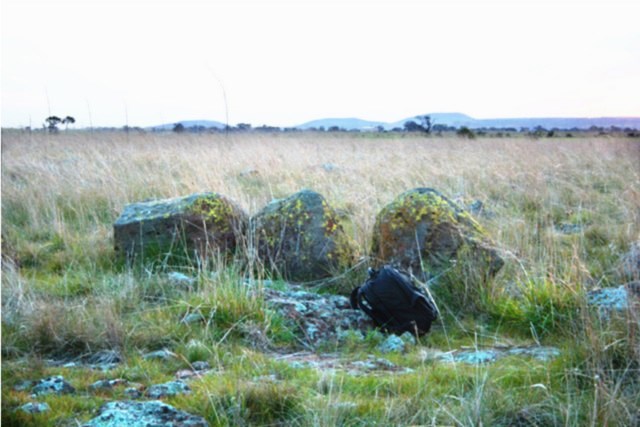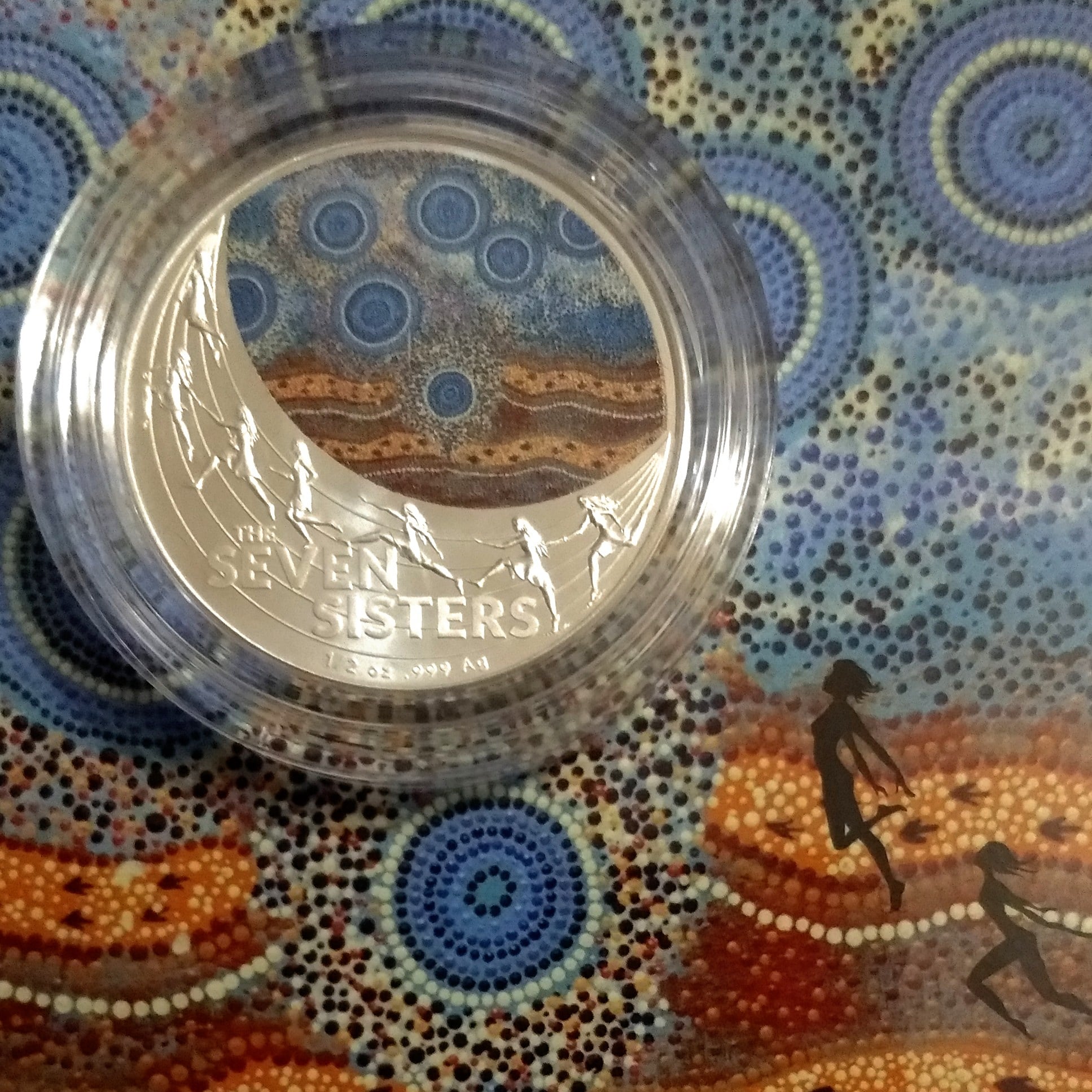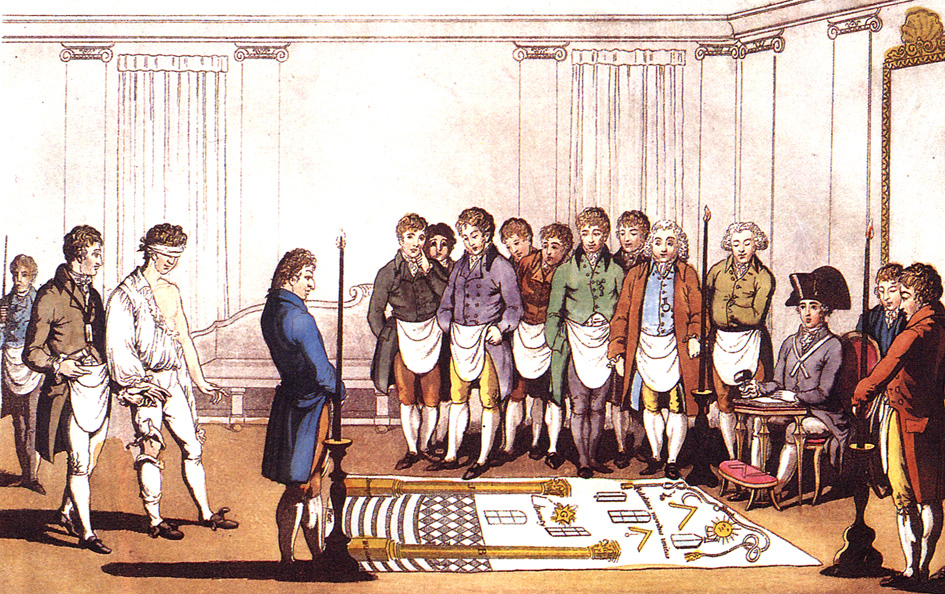|
Aboriginal Stone Arrangements
__NOTOC__ Aboriginal stone arrangements are a form of rock art constructed by Aboriginal Australians. Typically, they consist of stones, each of which may be about in size, laid out in a pattern extending over several metres or tens of metres. Notable examples have been made by many different Australian Aboriginal cultures, and in many cases are thought to be associated with spiritual ceremonies. Particularly fine examples are in Victoria, where the stones can be very large (up to high). For example, the stone arrangement at Wurdi Youang consists of about 100 stones arranged in an egg-shaped oval about across. Each stone is well-embedded into the soil, and many have "trigger-stones" to support them. The appearance of the site is very similar to that of the megalithic stone circles found throughout Britain (although the function and culture are presumably completely different). Although its association with Indigenous Australians is well-authenticated and beyond doubt, the pu ... [...More Info...] [...Related Items...] OR: [Wikipedia] [Google] [Baidu] |
Wurdi Youang
Wurdi Youang is the name attributed to an Aboriginal stone arrangement located off the Little River – Ripley Road at Mount Rothwell, near Little River, Victoria in Australia. The site was acquired by the Indigenous Land Corporation on 14 January 2000 and transferred to the Wathaurong Aboriginal Co-operative on 17 August 2006. Description The stone arrangement takes the form of an irregular egg-shape or ovoid about in diameter with its major axis aligning east-west. It is composed of about 100 basalt stones, ranging from small rocks about in diameter to standing stones about high with an estimated total mass of about . There are three prominent waist-high stones, at its western end, which is the highest point of the ring. The purpose, use, and age of the arrangement are not known. The purpose of the site may be ceremonial in nature as with many other stone arrangements in southeastern Australia. The site is recorded on the Victorian Aboriginal Heritage Register, the Vi ... [...More Info...] [...Related Items...] OR: [Wikipedia] [Google] [Baidu] |
Arnhem Land
Arnhem Land is a historical region of the Northern Territory of Australia. It is located in the north-eastern corner of the territory and is around from the territorial capital, Darwin, Northern Territory, Darwin. In 1623, Dutch East India Company captain Voyage of the Pera and Arnhem to Australia in 1623, Willem Joosten van Colster (or Coolsteerdt) sailed into the Gulf of Carpentaria and Cape Arnhem is named after his ship, the ''Arnhem'', which itself was named after the city of Arnhem in the Netherlands. The area covers about and has an estimated population of 16,000, of whom 12,000 are Aboriginal and Torres Strait Islander people. Two regions are often distinguished as East Arnhem (Land) and West Arnhem (Land). The region's service hub is Nhulunbuy, east of Darwin, set up in the early 1970s as a mining town for bauxite. Other major population centres are Yirrkala (just outside Nhulunbuy), Gunbalanya (formerly Oenpelli), Ramingining, and Maningrida. A substantial proportio ... [...More Info...] [...Related Items...] OR: [Wikipedia] [Google] [Baidu] |
Australian Aboriginal Cultural History
Australian(s) may refer to: Australia * Australia, a country * Australians, citizens of the Commonwealth of Australia ** European Australians ** Anglo-Celtic Australians, Australians descended principally from British colonists ** Aboriginal Australians, indigenous peoples of Australia as identified and defined within Australian law * Australia (continent) ** Indigenous Australians * Australian English, the dialect of the English language spoken in Australia * Australian Aboriginal languages * ''The Australian'', a newspaper * Australiana, things of Australian origins Other uses * Australian (horse), a racehorse * Australian, British Columbia, an unincorporated community in Canada See also * The Australian (other) * Australia (other) * * * Austrian (other) Austrian may refer to: * Austrians, someone from Austria or of Austrian descent ** Someone who is considered an Austrian citizen * Austrian German dialect * Something associated with the countr ... [...More Info...] [...Related Items...] OR: [Wikipedia] [Google] [Baidu] |
Archaeoastronomy
Archaeoastronomy (also spelled archeoastronomy) is the interdisciplinary or multidisciplinary study of how people in the past "have understood the phenomena in the sky, how they used these phenomena and what role the sky played in their cultures". Clive Ruggles argues it is misleading to consider archaeoastronomy to be the study of ancient astronomy, as modern astronomy is a scientific discipline, while archaeoastronomy considers symbolically rich cultural interpretations of phenomena in the sky by other cultures. It is often twinned with ''ethnoastronomy'', the anthropological study of skywatching in contemporary societies. Archaeoastronomy is also closely associated with historical astronomy, the use of historical records of heavenly events to answer astronomical problems and the history of astronomy, which uses written records to evaluate past astronomical practice. Archaeoastronomy uses a variety of methods to uncover evidence of past practices including archaeology, an ... [...More Info...] [...Related Items...] OR: [Wikipedia] [Google] [Baidu] |
Aboriginal Astronomy
Australian Aboriginal astronomy has been passed down orally, through ceremonies, and in their artwork of many kinds. The astronomical systems passed down thus show a depth of understanding of the movement of celestial objects which allowed them to use them as a practical means for creating calendars and for navigating across the continent and waters of Australia. There is a diversity of astronomical traditions in Australia, each with its own particular expression of cosmology. However, there appear to be common themes and systems between the groups. Due to the long history of Australian Aboriginal astronomy, the Aboriginal peoples have been described as "world's first astronomers" on several occasions. Many of the constellations were given names based on their shapes, just as traditional western astronomy does, such as the Pleiades, Orion and the Milky Way, with others, such as Emu in the Sky, describes the dark patches rather than the points lit by the stars. Contemporary Indi ... [...More Info...] [...Related Items...] OR: [Wikipedia] [Google] [Baidu] |
Indigenous Australian Art
Indigenous Australian art includes art made by Aboriginal Australians and Torres Strait Islanders, including collaborations with others. It includes works in a wide range of media including painting on leaves, bark painting, wood carving, rock carving, watercolour painting, sculpting, Aboriginal ceremony, ceremonial clothing and sandpainting. The traditional visual symbols vary widely among the differing peoples' traditions, despite the common mistaken perception that dot painting is representative of all Aboriginal art. Traditional Aboriginal art There are many types of and methods used in making Aboriginal art, including rock painting, dot painting, rock engravings, bark painting, carvings, sculptures, weaving, and string art. Australian Aboriginal art is the oldest unbroken tradition of art in the world.Worms, Ernest ''Contemporary and prehistoric rock paintings in Central and Northern North Kimberley'' Anthropos Switzerland 1955 p. 555 Stone art Rock art, including paint ... [...More Info...] [...Related Items...] OR: [Wikipedia] [Google] [Baidu] |
Cardinal Directions
The four cardinal directions or cardinal points are the four main compass directions: north (N), south (S), east (E), and west (W). The corresponding azimuths ( clockwise horizontal angle from north) are 0°, 90°, 180°, and 270°. The four ordinal directions or intercardinal directions are northeast (NE), southeast (SE), southwest (SW), and northwest (NW). The corresponding azimuths are 45°, 135°, 225°, and 315°. The intermediate direction of every pair of neighboring cardinal and intercardinal directions is called a secondary intercardinal direction. These eight shortest points in the compass rose shown to the right are: # West-northwest (WNW) # North-northwest (NNW) # North-northeast (NNE) # East-northeast (ENE) # East-southeast (ESE) # South-southeast (SSE) # South-southwest (SSW) # West-southwest (WSW) Points between the cardinal directions form the points of the compass. Arbitrary horizontal directions may be indicated by their azimuth angle value. Determinatio ... [...More Info...] [...Related Items...] OR: [Wikipedia] [Google] [Baidu] |
Rite Of Passage
A rite of passage is a ceremony or ritual of the passage which occurs when an individual leaves one group to enter another. It involves a significant change of social status, status in society. In cultural anthropology the term is the Anglicisation of ''rite de passage'', a French term innovated by the Ethnography, ethnographer Arnold van Gennep in his work ''Les rites de passage'', ''The Rites of Passage''. The term is now fully adopted into anthropology as well as into the literature and popular cultures of many modern languages. Original conception In English, Van Gennep's first sentence of his first chapter begins: "Each larger society contains within it several distinctly separate groupings. ... In addition, all these groups break down into still smaller societies in subgroups." The population of a society belongs to multiple groups, some more important to the individual than others. Van Gennep uses the metaphor, "as a kind of house divided into rooms and corridors." A ... [...More Info...] [...Related Items...] OR: [Wikipedia] [Google] [Baidu] |
Initiation Ceremony
Initiation is a rite of passage marking entrance or acceptance into a group or society. It could also be a formal admission to adulthood in a community or one of its formal components. In an extended sense, it can also signify a transformation in which the initiate is 'reborn' into a new role. Examples of initiation ceremonies might include Christian baptism or confirmation, Jewish bar or bat mitzvah, acceptance into a fraternal organization, secret society or religious order, or graduation from school or recruit training. A person taking the initiation ceremony in traditional rites, such as those depicted in these pictures, is called an ''initiate''. Characteristics William Ian Miller notes the role of ritual humiliation in comic ordering and testing. Mircea Eliade discussed initiation as a principal religious act by classical or traditional societies. He defined initiation as "a basic change in existential condition", which liberates man from profane time and history. "I ... [...More Info...] [...Related Items...] OR: [Wikipedia] [Google] [Baidu] |
Bora (Australian)
Bora is an initiation ceremony of the Aboriginal people of Eastern Australia. The word "bora" also refers to the site on which the initiation is performed. At such a site, boys, having reached puberty, achieve the status of men. The initiation ceremony differs from Aboriginal culture to culture, but often, at a physical level, involved scarification, circumcision, subincision and, in some regions, also the removal of a tooth. During the rites, the youths who were to be initiated were taught traditional sacred songs, the secrets of the tribe's religious visions, dances, and traditional lore. Many different clans would assemble to participate in an initiation ceremony. Women and children were not permitted to be present at the sacred bora ground where these rituals were undertaken. Bora terminology The word ''Bora'' was originally taken from the Gamilaraay language spoken by the Kamilaroi people who lived in the region north of the Hunter Valley in New South Wales to souther ... [...More Info...] [...Related Items...] OR: [Wikipedia] [Google] [Baidu] |
European Settlement Of Australia
European, or Europeans, may refer to: In general * ''European'', an adjective referring to something of, from, or related to Europe ** Ethnic groups in Europe ** Demographics of Europe ** European cuisine, the cuisines of Europe and other Western countries * ''European'', an adjective referring to something of, from, or related to the European Union ** European Union citizenship ** Demographics of the European Union In publishing * ''The European'' (1953 magazine), a far-right cultural and political magazine published 1953–1959 * ''The European'' (newspaper), a British weekly newspaper published 1990–1998 * ''The European'' (2009 magazine), a German magazine first published in September 2009 *''The European Magazine'', a magazine published in London 1782–1826 *''The New European'', a British weekly pop-up newspaper first published in July 2016 Other uses * * Europeans (band), a British post-punk group, from Bristol See also * * * Europe (other) * The E ... [...More Info...] [...Related Items...] OR: [Wikipedia] [Google] [Baidu] |
Makassan Contact With Australia
Makassar people from the region of Sulawesi in Indonesia began visiting the coast of Northern Australia sometime around the middle of the 18th century, first in the Kimberley region, and some decades later in Arnhem Land. They were men who collected and processed ''trepang'' (also known as sea cucumber), a marine invertebrate prized for its culinary value generally and for its supposed medicinal properties in Chinese markets. The term Makassan (or Macassan) is generally used to apply to all the trepangers who came to Australia. Fishing and processing of trepang The creature and the food product are commonly known in English as sea cucumber, ''bêche-de-mer'' in French, '' gamat'' in Malay, while Makassarese has 12 terms covering 16 different species. One of the Makassar terms, for trepang, ''taripaŋ'', entered the Aboriginal languages of the Cobourg Peninsula, as ''tharriba'' in Marrku, as ''jarripang'' in Mawng or otherwise as ''darriba.'' ''Trepang'' live on th ... [...More Info...] [...Related Items...] OR: [Wikipedia] [Google] [Baidu] |







